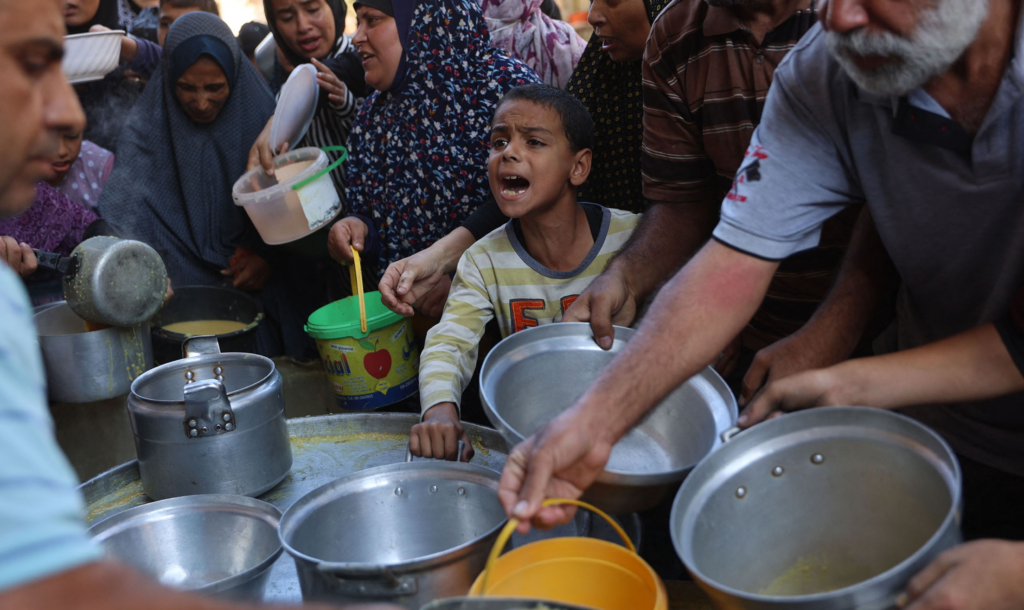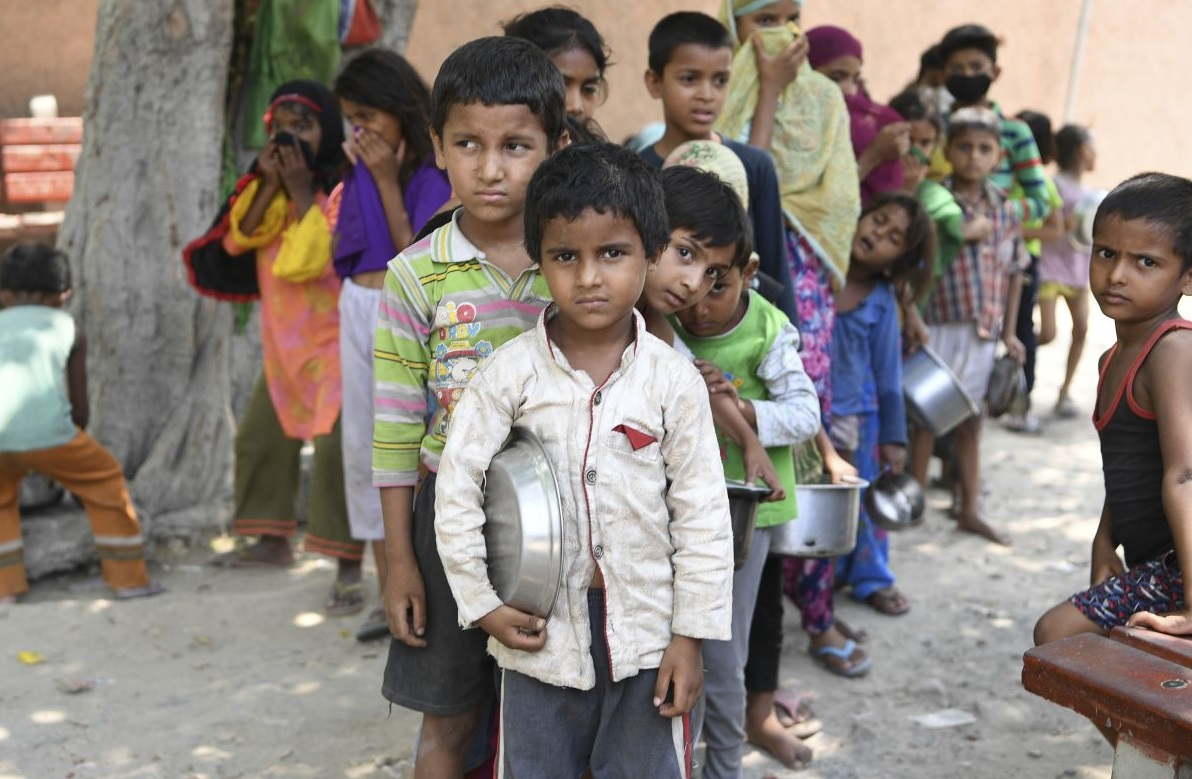A UN report highlights the staggering reality of multidimensional poverty, revealing that over 1.1 billion people around the world live in acute deprivation. Nearly half of these individuals are found in countries experiencing ongoing conflict, underscoring the profound impact that war and violence have on poverty.
The findings provide a sobering look at the challenges faced by millions, especially in regions like sub-Saharan Africa and South Asia, where poverty is most prevalent.
Conflict and the Escalation of Poverty
One of the most significant revelations in the UN Development Programme (UNDP) report is the strong correlation between conflict and poverty.
According to the Multidimensional Poverty Index, 455 million people live in areas affected by conflict, where the deprivation across various indicators of poverty is much more pronounced.
This means that in war-torn regions, people are more likely to suffer from severe shortages in nutrition, access to clean water, electricity, and adequate sanitation.
Read : I’ll Shave My Head on Camera If Musk Launches Tesla Robotaxi Before 2027: MKBHD
The situation is particularly dire in countries like Afghanistan, where a decade of conflict and instability has pushed millions deeper into poverty. In Afghanistan alone, the number of people living in extreme poverty grew by 5.3 million between 2015 and 2023.
Read : India Contributed $1 Million to Continue Promotion of Hindi Language at UN
Today, nearly two-thirds of Afghans are classified as poor, demonstrating the devastating long-term impacts that war can have on the economic stability of a nation.
The UNDP’s chief statistician, Yanchun Zhang, emphasized the desperation of those living in conflict-affected areas, stating that for these individuals, the battle to meet basic needs is a far harsher and more desperate struggle.
Conflicts not only disrupt livelihoods but also create barriers to accessing essential resources, making it even more challenging for people to break out of the poverty cycle.
The Global Picture of Multidimensional Poverty
The Multidimensional Poverty Index provides a more comprehensive view of poverty than traditional income-based measures, as it includes various indicators such as lack of access to proper housing, clean water, electricity, cooking fuel, nutrition, and education.
Based on research across 112 countries, covering 6.3 billion people, the index reveals that poverty is not confined to a lack of income alone but extends to various dimensions that define quality of life.
The report indicates that 584 million of those living in extreme poverty are children under the age of 18, representing 27.9% of the global child population. This is a stark contrast to the 13.5% of adults who face the same conditions.

The impact of poverty on children is especially concerning, as it affects their development, education, and future opportunities. Child mortality rates in conflict zones are also significantly higher, with 8% of children dying in these areas compared to just 1.1% in peaceful regions.
In terms of geographic distribution, sub-Saharan Africa and South Asia are home to the majority of the world’s poor, with 83.2% of those living in multidimensional poverty found in these regions.
The scale of deprivation in these areas is vast, with countries like Nigeria, Ethiopia, and the Democratic Republic of the Congo grappling with extreme poverty and its associated challenges.
For many families in these regions, access to basic services such as healthcare, education, and clean water remains out of reach, further perpetuating the cycle of poverty.
India: The Country with the Largest Number of Poor People
India, the world’s most populous country, faces a daunting challenge when it comes to poverty. The UN report identifies India as the country with the highest number of people living in extreme poverty, with 234 million of its 1.4 billion population affected.
Despite significant economic growth in recent decades, large segments of the Indian population remain trapped in poverty, particularly in rural areas where access to essential services is limited.
The report notes that poverty in India is multidimensional, meaning that it is not only a matter of income but also involves deprivation across a range of factors, including education, healthcare, and living conditions.
For example, millions of Indians lack access to clean drinking water, electricity, and adequate sanitation facilities. These basic necessities are crucial for improving quality of life, yet many in the country are still denied them.

India’s poverty challenge is exacerbated by its vast and diverse population, with regional disparities in wealth and development. While cities like Mumbai and Delhi have seen rapid growth and modernization, rural areas remain largely underdeveloped.
The Indian government has implemented numerous poverty reduction programs over the years, but the sheer scale of the problem means that progress is often slow and uneven.
The report also highlights the significant impact of poverty on India’s children, with millions of young people growing up without access to proper education and healthcare.
This not only limits their potential but also has long-term consequences for the country’s development. With nearly one in every five people in India living in poverty, addressing this issue is a matter of national urgency.
Addressing Poverty Amidst Conflict
The UN report calls for urgent action to address the growing crisis of poverty, particularly in conflict-affected regions. The findings indicate that poverty reduction efforts are significantly slower in areas experiencing war and violence, which means that millions of people are being left behind.
As Sabina Alkire, Director of the Oxford Poverty and Human Development Initiative (OPHI), noted, “We cannot end poverty without investing in peace.” Conflict not only exacerbates poverty but also creates an environment in which it becomes nearly impossible to implement effective poverty reduction strategies.
The destruction of infrastructure, displacement of populations, and disruption of livelihoods make it difficult for governments and international organizations to provide the necessary support to those in need. As a result, poverty persists and deepens in these regions, trapping people in a cycle of deprivation.
For countries like Afghanistan, Syria, and Yemen, where conflict has raged for years, rebuilding will require a concerted effort from both domestic governments and the international community.
Addressing the root causes of conflict, promoting peace, and providing humanitarian aid are essential steps in alleviating poverty in these regions. Without peace, the battle against poverty will continue to be an uphill struggle.

At the same time, countries like India, which are not currently experiencing conflict but still face high levels of poverty, need to focus on improving access to basic services for their most vulnerable populations. This includes investing in education, healthcare, and infrastructure, particularly in rural and underserved areas.
By addressing the multidimensional nature of poverty, countries can create a more inclusive and sustainable path to development.
The UN report serves as a reminder of the scale of the global poverty challenge and the need for comprehensive, coordinated efforts to address it. Whether in conflict zones or peaceful nations, poverty remains a significant barrier to human development.
By investing in peace, promoting sustainable development, and ensuring that everyone has access to basic services, the world can make strides toward ending poverty for good.

